We may earn revenue from the products available on this page and participate in affiliate programs. Learn More ›
Houseplants are more than just decorative accents. These natural household helpers reduce carbon dioxide and dust levels, and they look great while doing it. Just pick one or two of the sleep-promoting candidates that follow, and see if a little bit of greenery by your bedside will give you a more restful night.
1. Lavender (Lavandula spp.)
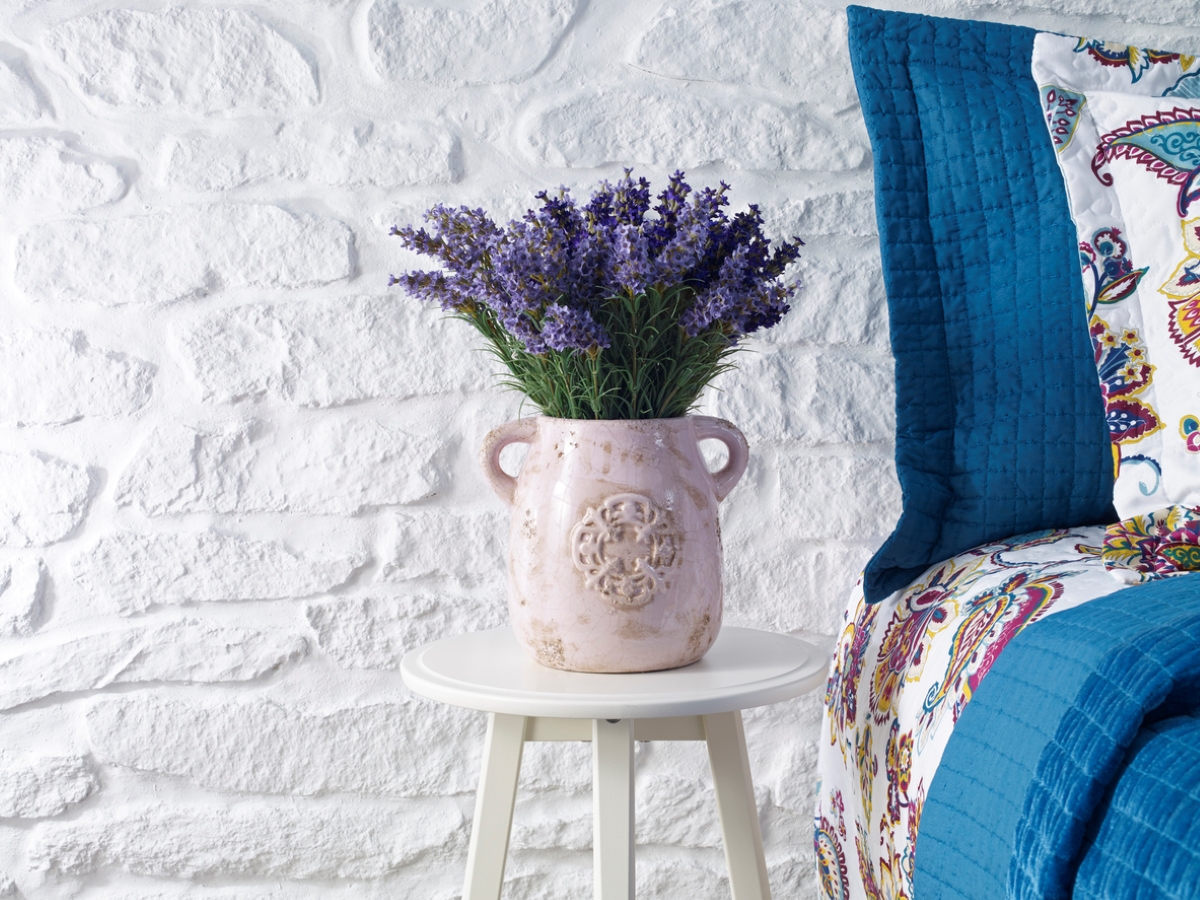
Lavender has been shown to reduce both blood pressure and heart rate. Placing a lavender plant next to your bed so you can inhale its soothing scent while you slumber could help promote a good night’s sleep—naturally. The plant is mildly toxic to pets, so place it carefully if you share your bedroom with a furry friend.
2. Jasmine (Jasminum spp.)
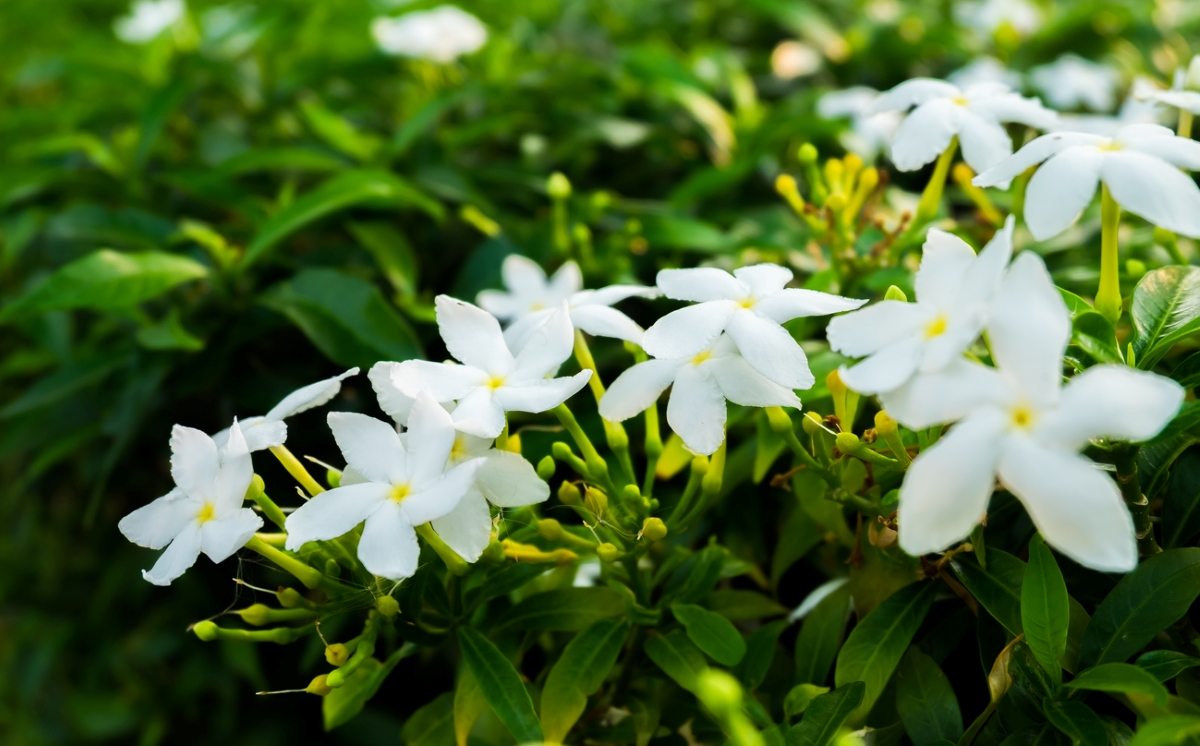
Jasmine makes an attractive accent plant, but it’s more than just a pretty face. According to a German study, the scent of jasmine actually improves the quality of your sleep and increases your chances of waking up with a better attitude and less anxiety.
3. Peace Lily (Spathiphyllum spp.)
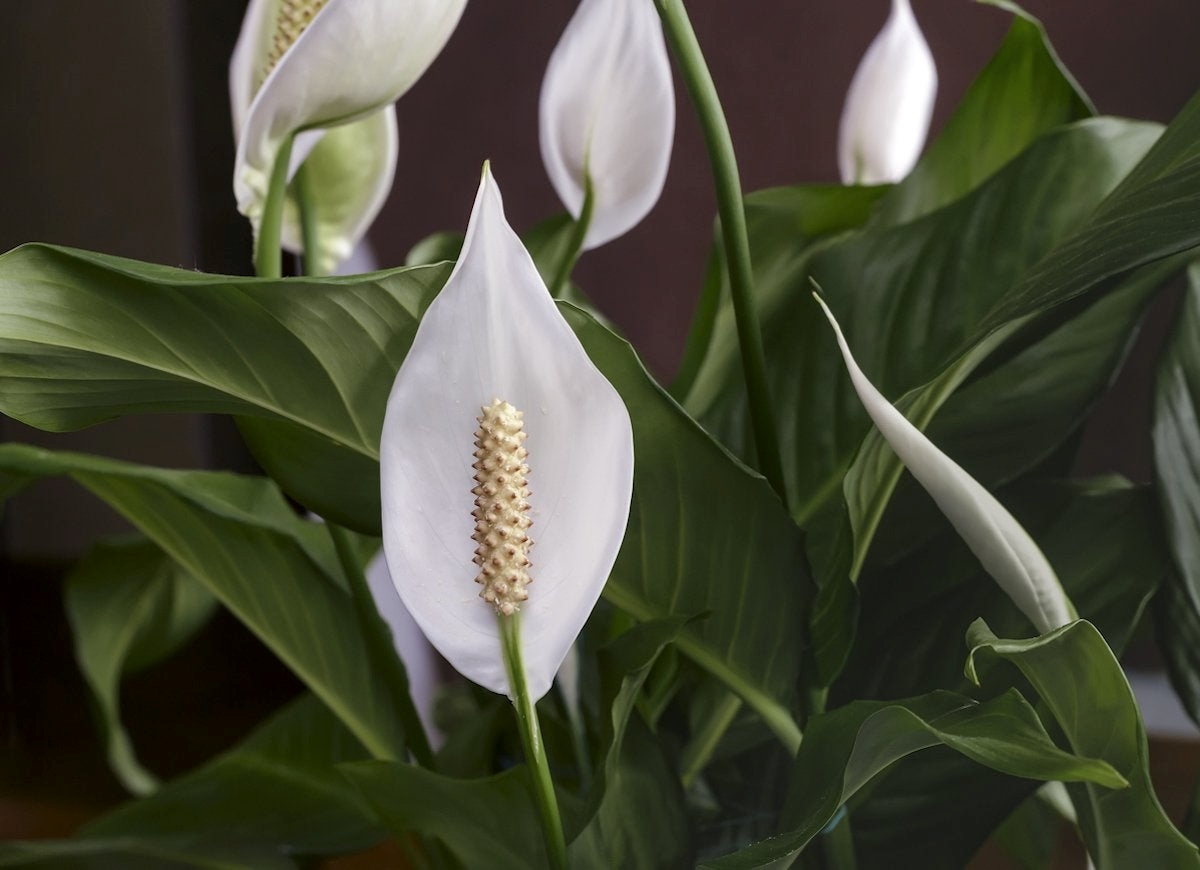
The peace lily is beloved for its graceful beauty and easy care requirements. Peace lily is also a good pick for the bedroom because it’s been shown to reduce the microbe count in your home’s air, which in turn can relieve allergy symptoms. And don’t you think that a little respite from wheezing, sniffling, and a dry, itchy throat will make for a better night’s sleep? To make that sleep even better, be sure to keep your peace lily out of the reach of pets and small children—its leaves and sap are mildly toxic.
4. Aloe Vera (Aloe vera)
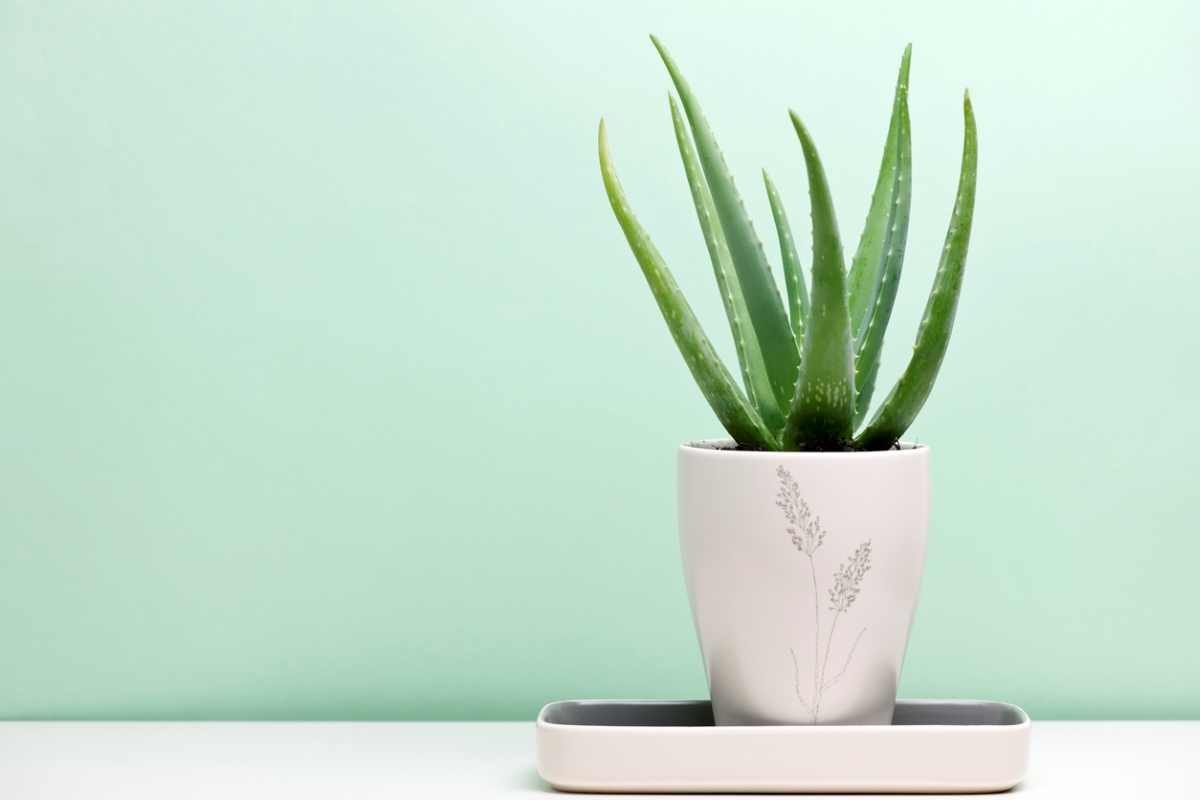
Aloe vera has long been prized for its ability to heal burns and rashes, but it has one other secret health property: It promotes better air quality. According to research, aloe vera emits oxygen at night instead of during the day, giving the air around it a boost that could benefit your sleep. Plus, it’s tolerant of neglect, making it a good choice for houseplant newbies. And, as aloe vera can go longer between waterings than many other traditional houseplants, it’s a smart choice for forgetful growers. Note that while it’s beneficial for humans, aloe vera can be mildly toxic to pets.
RELATED: This Aloe Vera Plant Care Routine Is Practically Foolproof
5. Valerian (Valeriana officinalis)
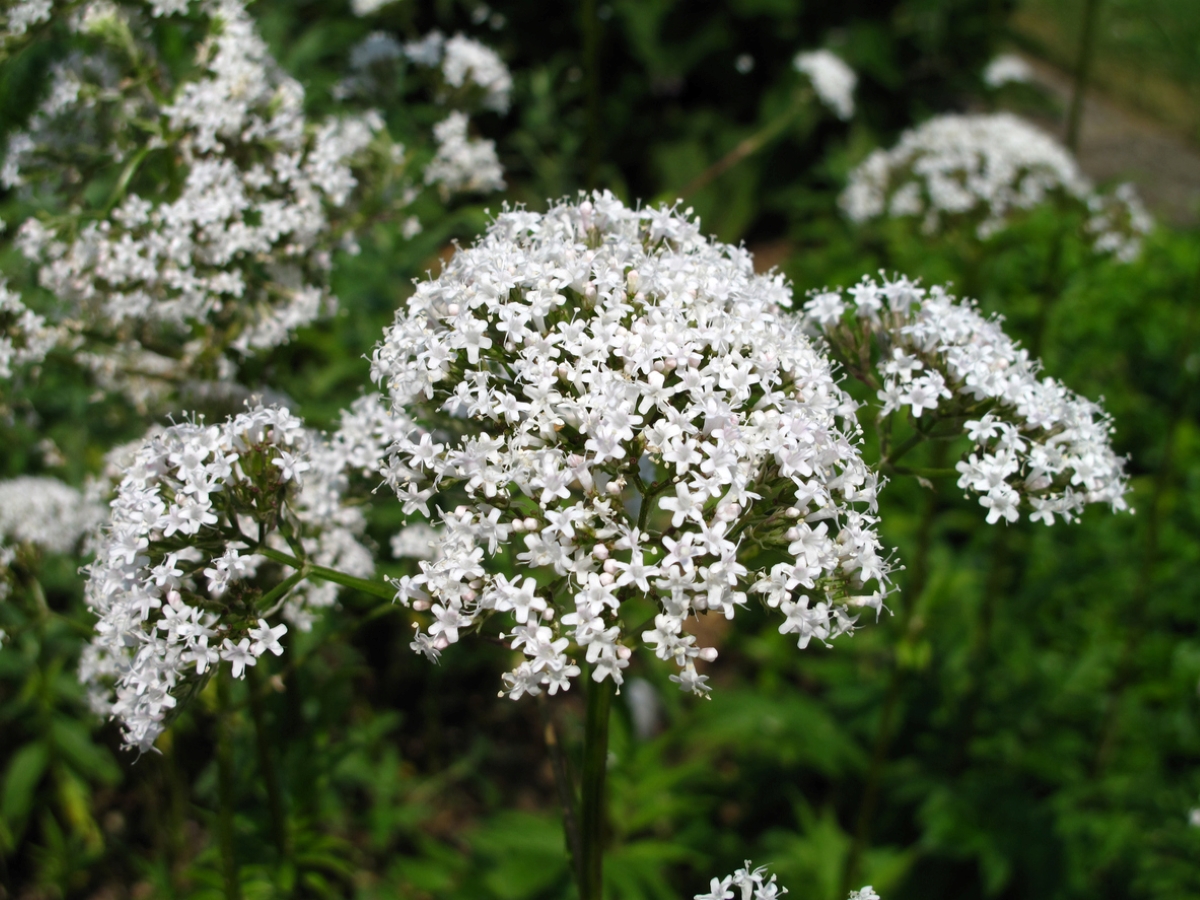
Inhaling the sweet scent of valerian flowers, according to one study, may help you fall asleep faster and stay asleep longer. If you want to keep a valerian plant in your bedroom, be sure it will get at least 6 hours of sunlight a day—it needs full sun to stay healthy.
RELATED: The 9 Best Paint Colors for a Restful Sleep
6. English Ivy (Hedera helix)
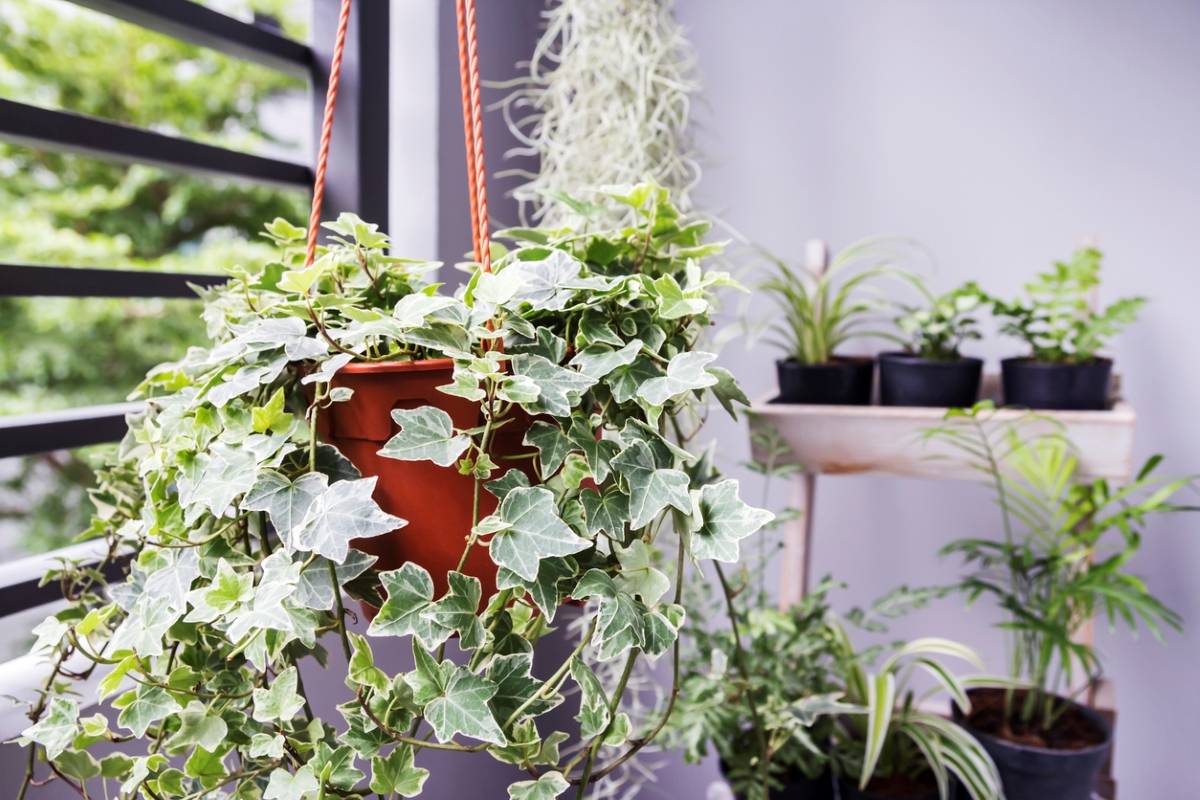
More commonly seen creeping up the facades of old brick buildings than resting on bedside tables, English ivy may seem like a strange choice for indoor gardeners, but there’s good reason to keep this ground cover in your bedroom. Ivy has been shown to drastically reduce the airborne mold in a room in just hours, which is great news for allergy sufferers in search of better sleep. If you need another reason, English ivy is a forgiving plant that requires only moderate exposure to sunlight. Like many plants on this list, it’s moderately toxic to pets, so keep it well away from them.
RELATED: 7 Houseplants with Secret Health Benefits
7. Gerbera Daisies (Gerbera jamesonii)
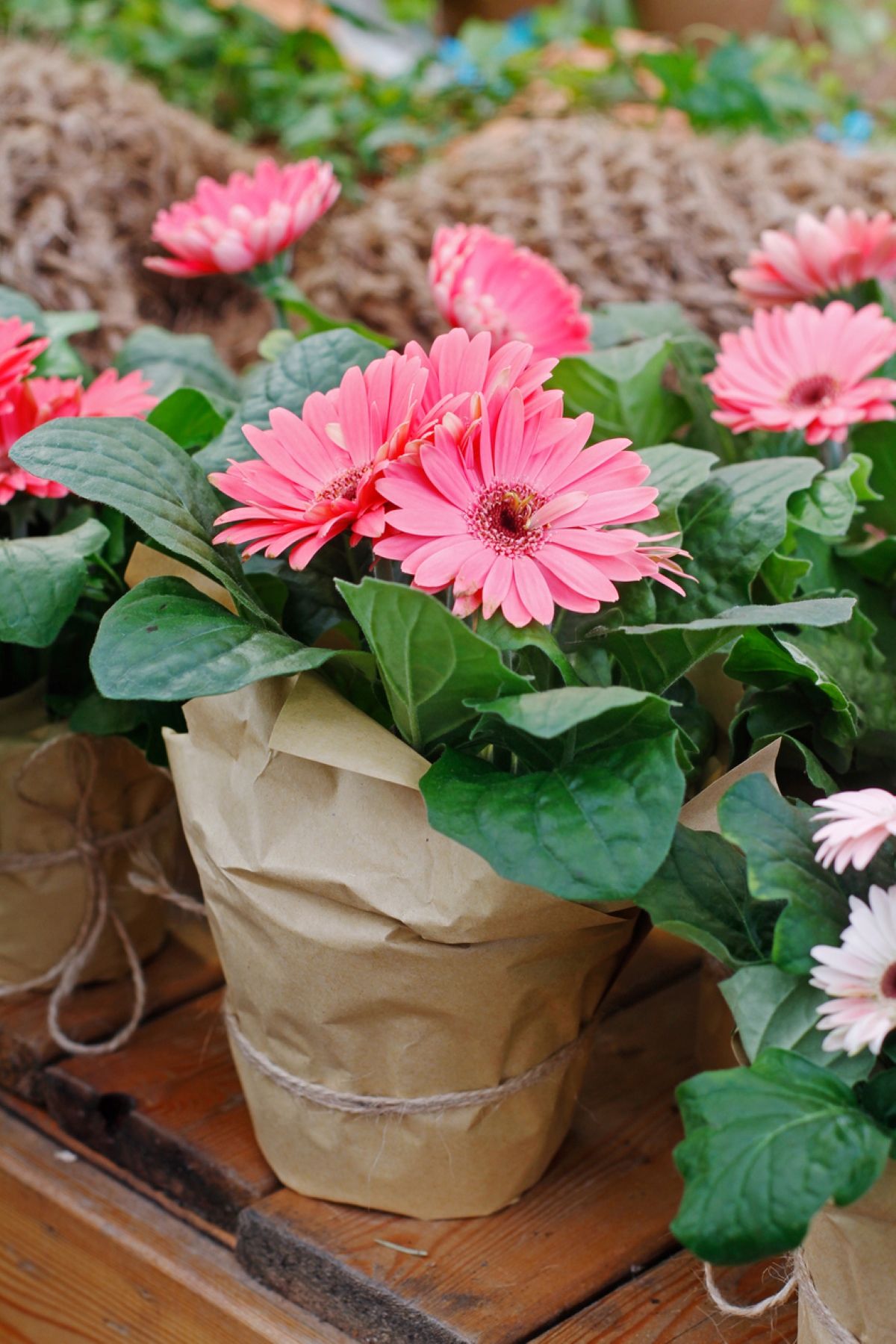
Gerbera daisies bring cheerful color during the day, and at night they emit oxygen and absorb toxins and carbon dioxide from the air. These flowers have long been recommended for people who suffer from sleep apnea and allergies. Although gerbera daisies require more maintenance than other sleep-promoting plants, the benefits they provide could make the extra care well worth it.
RELATED: Count On These 25 Indoor Plants for Easy Color Year-Round
8. Rosemary (Salvia rosmarinus)
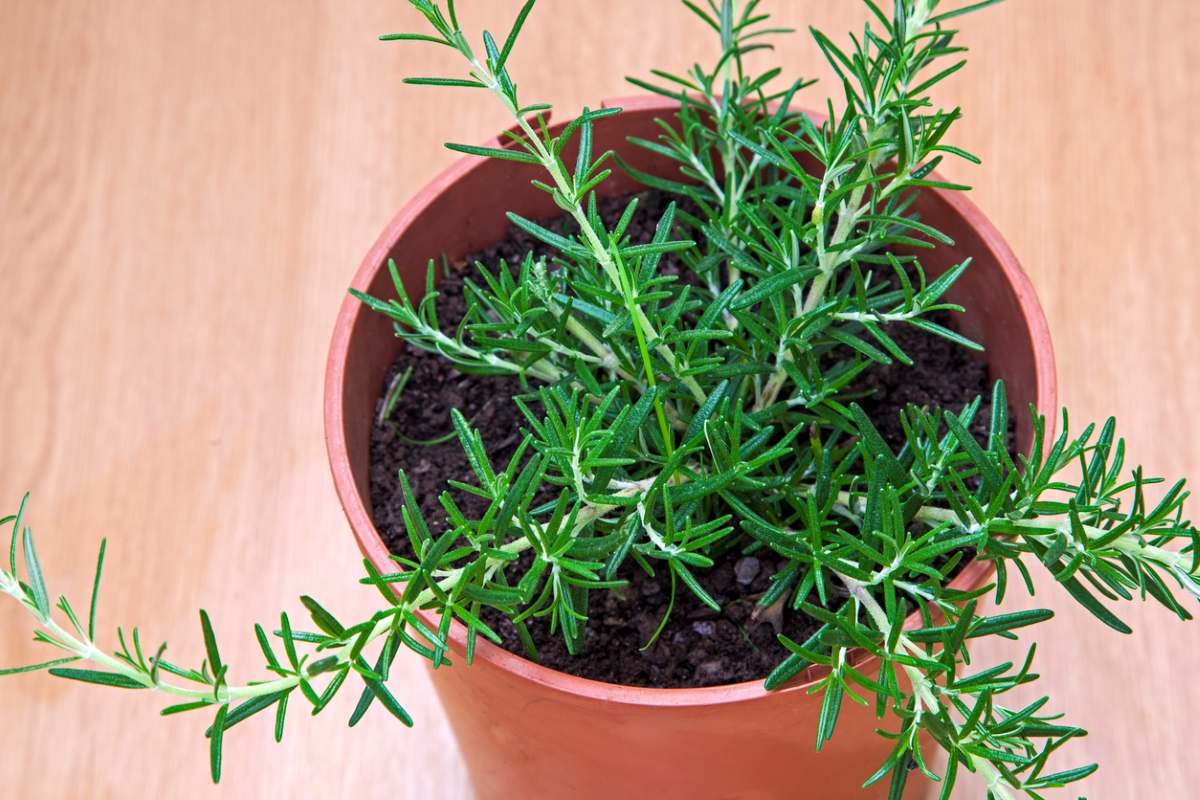
Rosemary has a strong, heady aroma that is known to reduce anxiety and stress, a quality that could make the hours you spend sleeping more peaceful and satisfying. If you keep rosemary in your bedroom, it won’t be too inconvenient for you to snip a sprig or two for a recipe when you’re cooking dinner.
RELATED: How To: Propagate Rosemary
9. Snake Plant (Dracaena trifasciata)
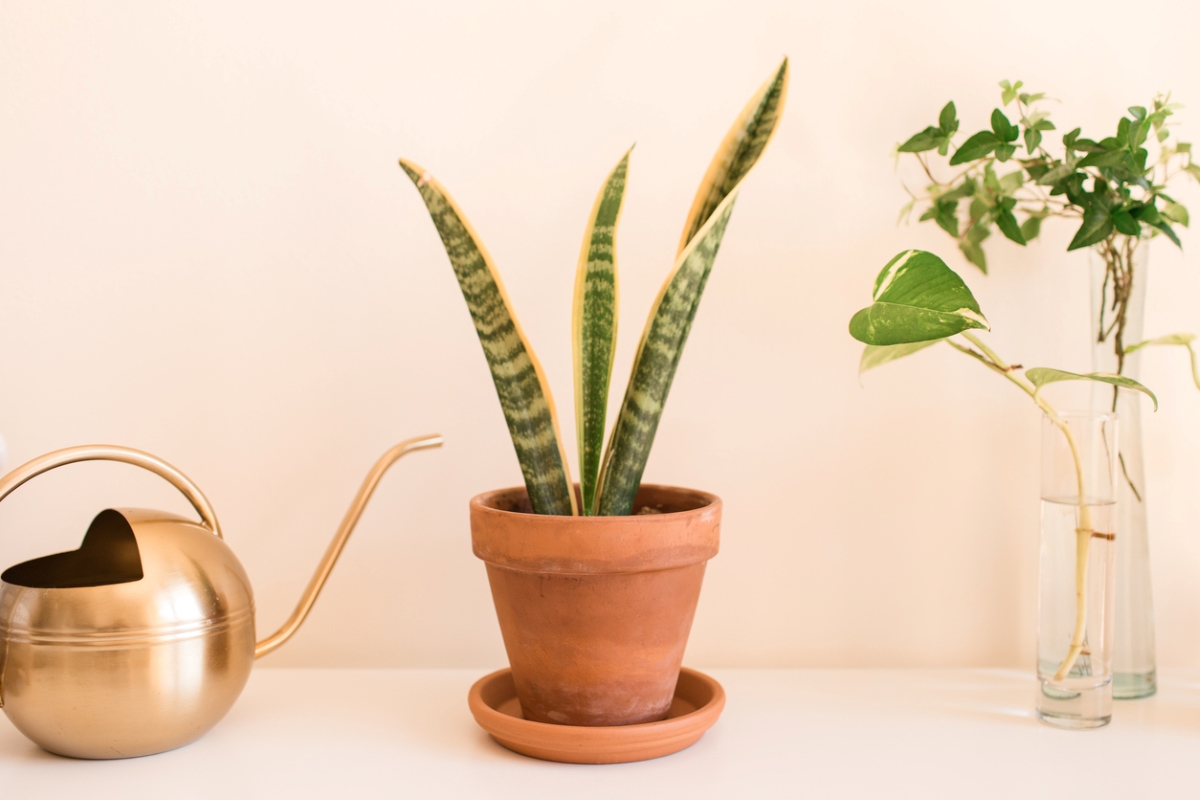
Whether you call it mother-in-law’s tongue or snake plant, neither one sounds like something you want next to your bed as you drift off to sleep. However, its air-cleaning properties may make you reconsider. According to NASA’s 1989 Clean Air Study, snake plant can help remove formaldehyde, benzene, and trichloroethylene from the air. What’s more, its tall, upward-growing leaves make for attractive decor, and short of overwatering it, it’s pretty hard to kill. Toxic to both cats and dogs, this is another one to keep out of reach of pets.
10. Spider Plant (Chlorophytum comosum)
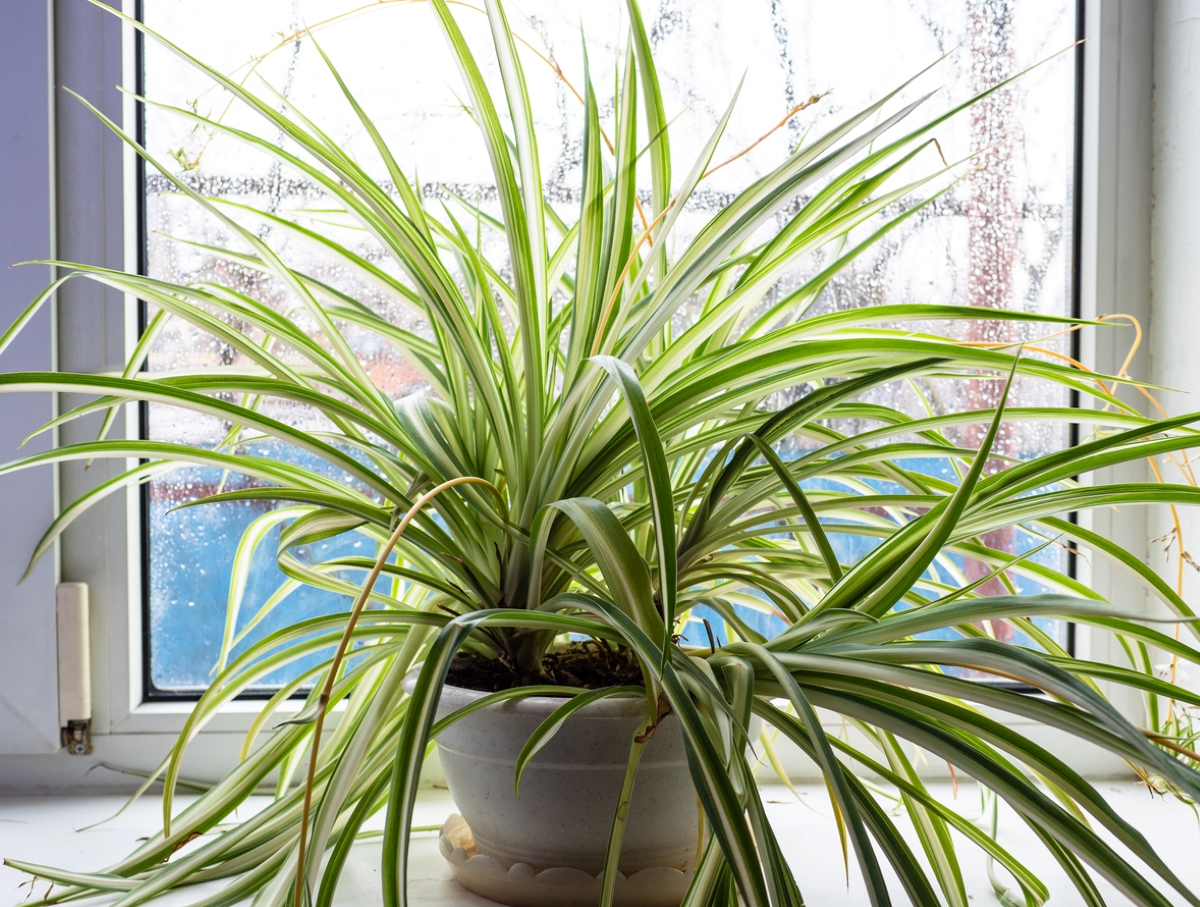
Like mother-in-law’s tongue, spider plant is hardy and easy to maintain. It, too, improves indoor air quality by removing formaldehyde, cigarette smoke, ammonia, and benzene, among other pollutants, from the air we breathe. A 2014 study found that spider plants also accumulate particulate matter, further cleaning the air. It’s safe in households with pets and can live in either bright light or less sunny indoor spots. The spider plant gets its name from the “spiderette” offshoots that hang from the main plant; occasional pruning will prevent the spider plant from becoming too unwieldy.
RELATED: The Best Herbs to Grow Indoors
11. Bamboo Palm (Chamaedorea seifrizii)
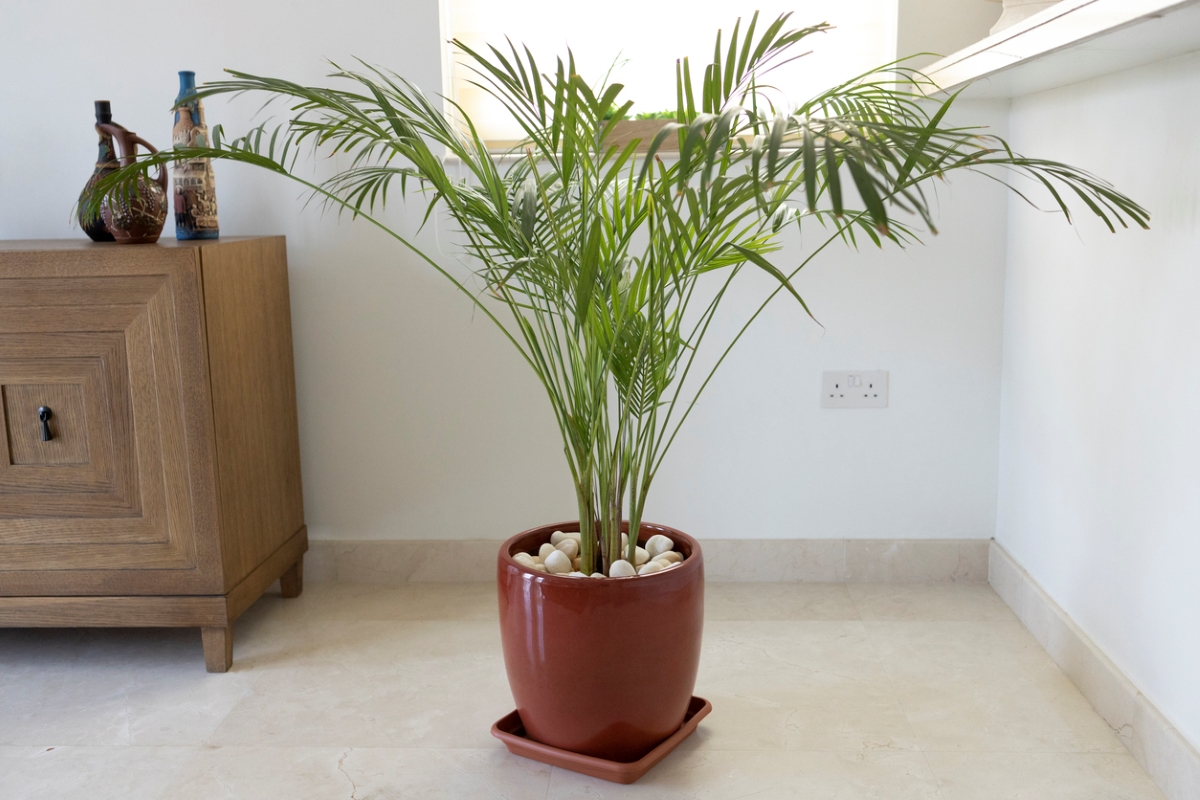
Low-maintenance bamboo palms thrive outdoors in USDA zones 10 and 11. Indoors, they bring a tropical vibe to the bedroom and can reach 4 to 8 feet when mature. This plant is a great choice for a sleeping space because it filters toxins such as xylene, chloroform, carbon monoxide, and formaldehyde out of the air. Because it prefers indirect light to full sun, there’s no need to ditch your blackout curtains, either.
12. Gardenia (Gardenia jasminoides)
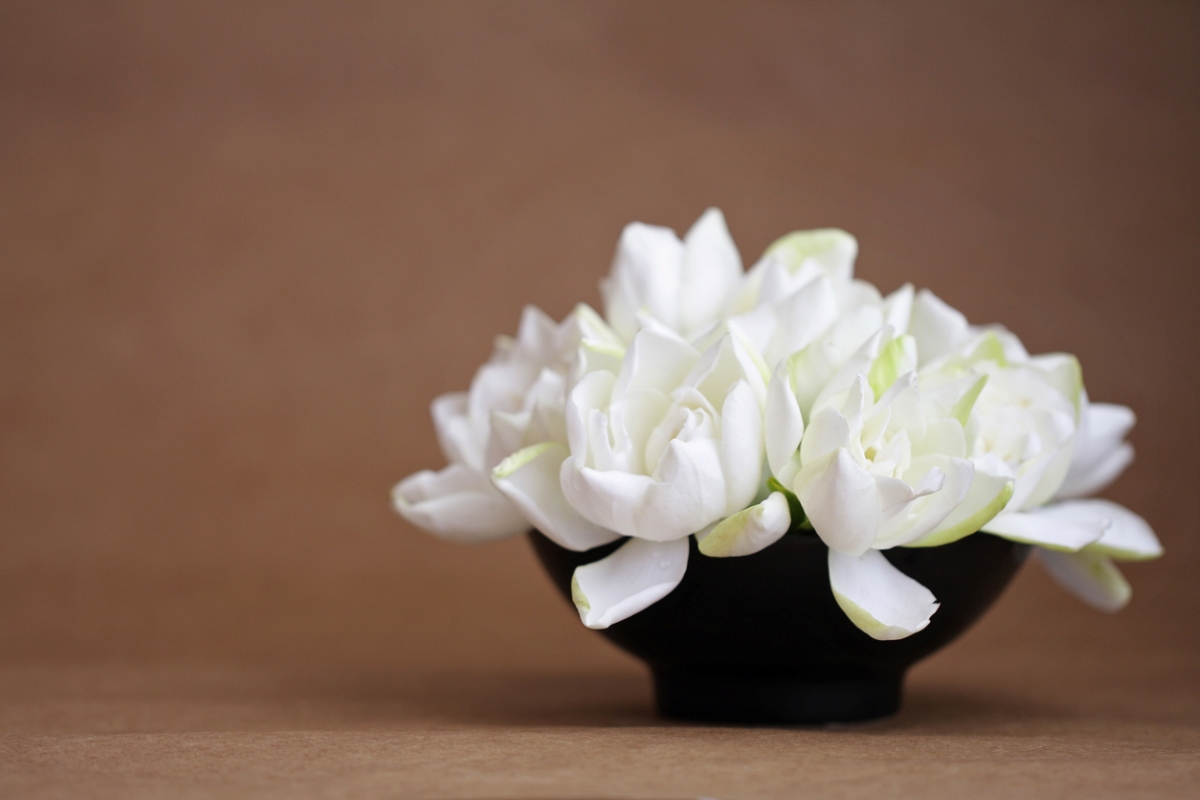
Gardenias, or cape jasmine, need 6 to 8 hours of sunlight a day, so keep the curtains open and park this potted flower near a sunny bedroom window. One study found that this flower’s intoxicating smell had the same anxiety-reducing effects as some barbiturates; therefore, this might be a good bedroom addition for those who need a mood booster, or who have trouble sleeping. Keep in mind that, while beautiful, the plants are mildly toxic to pets.
RELATED: How to Grow Gardenias
13. Areca Palm (Dypsis lutescens)
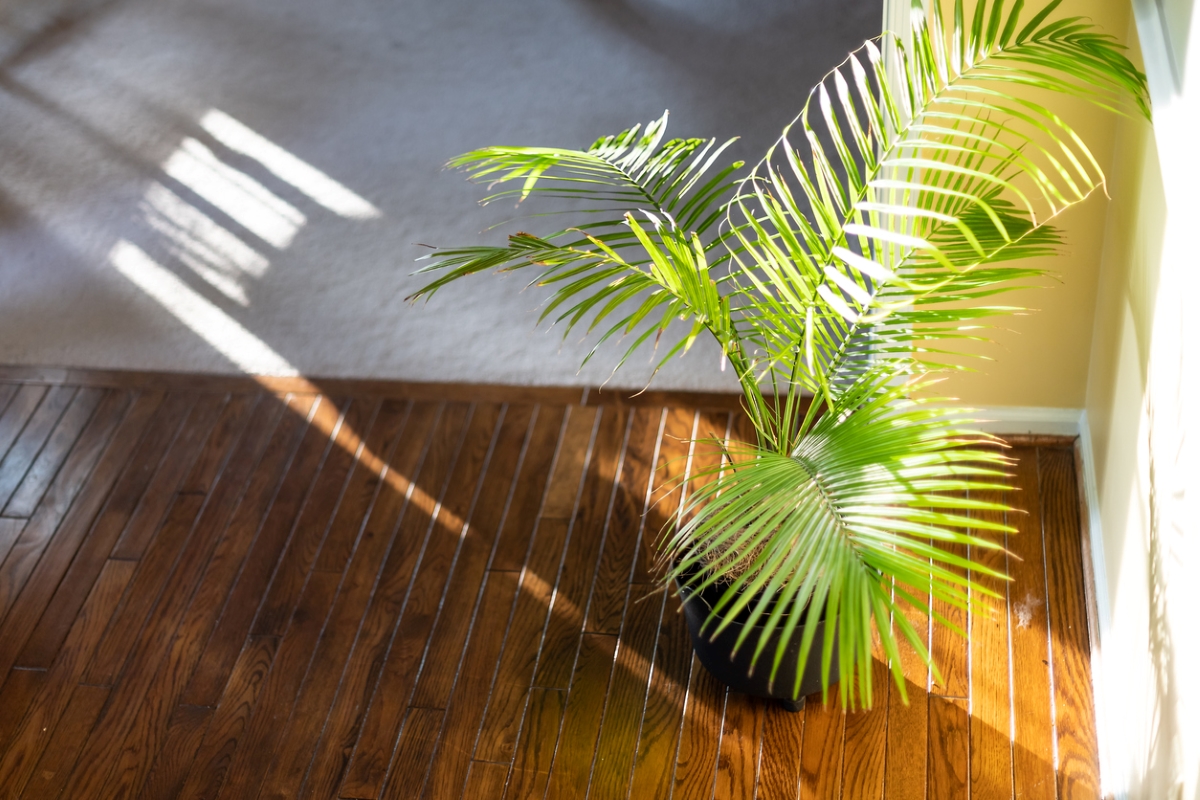
Areca palm is a large potted palm that’s native to Madagascar, so it’s not surprising that it likes moist, humid conditions. Multiple cane-like stems grow from its base, topped by narrow, feathery fronds. As a houseplant, the areca palm reaches a maximum height of about 10 feet and won’t flower. Studies show that areca palm can help mitigate indoor pollutants in the air you breathe.
14. Golden Pothos (Epipremnum aureum)
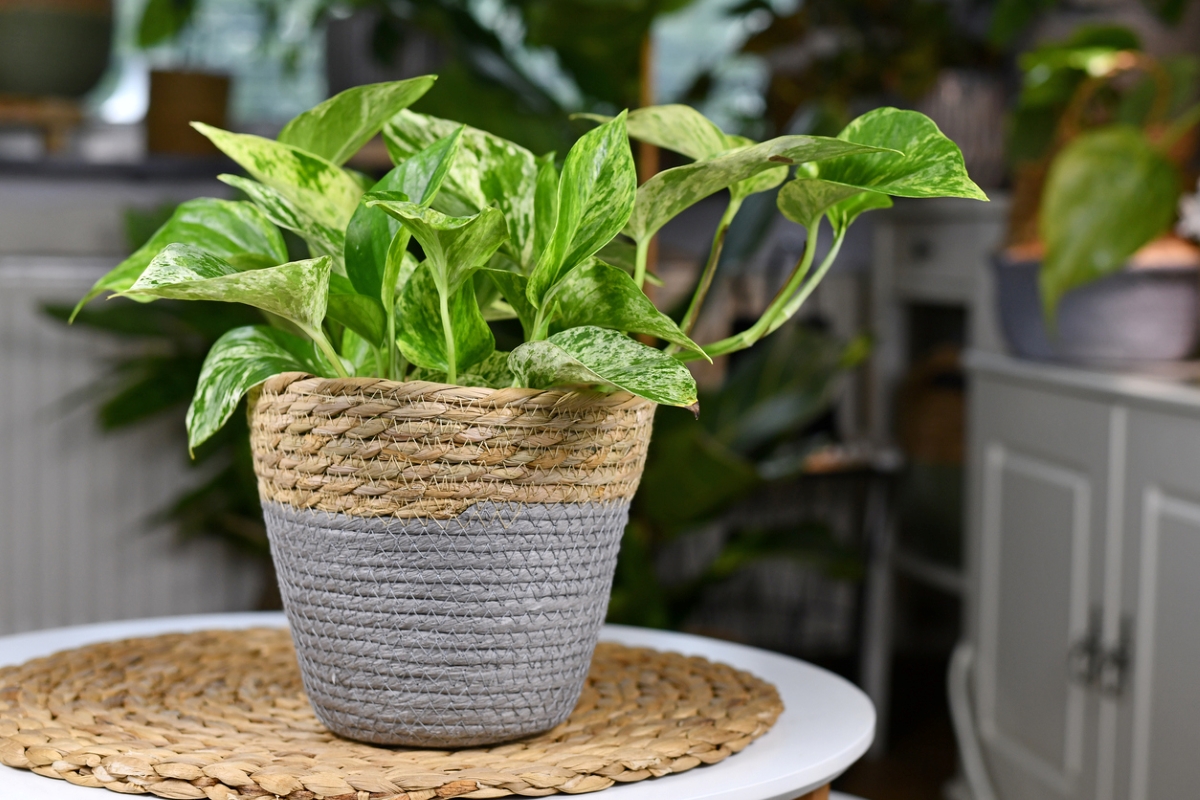
Thanks to the way its leaves cascade over its growing container, golden pothos, also known as devil’s ivy, is a good choice for those who want to hang plants in the bedroom. Pothos can help remove pollutants such as benzene, toluene, and formaldehyde from the air, according to NASA’s Clean Air Study, and it increases air humidity—great for sleeping spaces with dry air. It’s moderately toxic to pets, so place it appropriately.
RELATED: Pothos Plant Care
15. Chinese Evergreen (Aglaonema spp.)
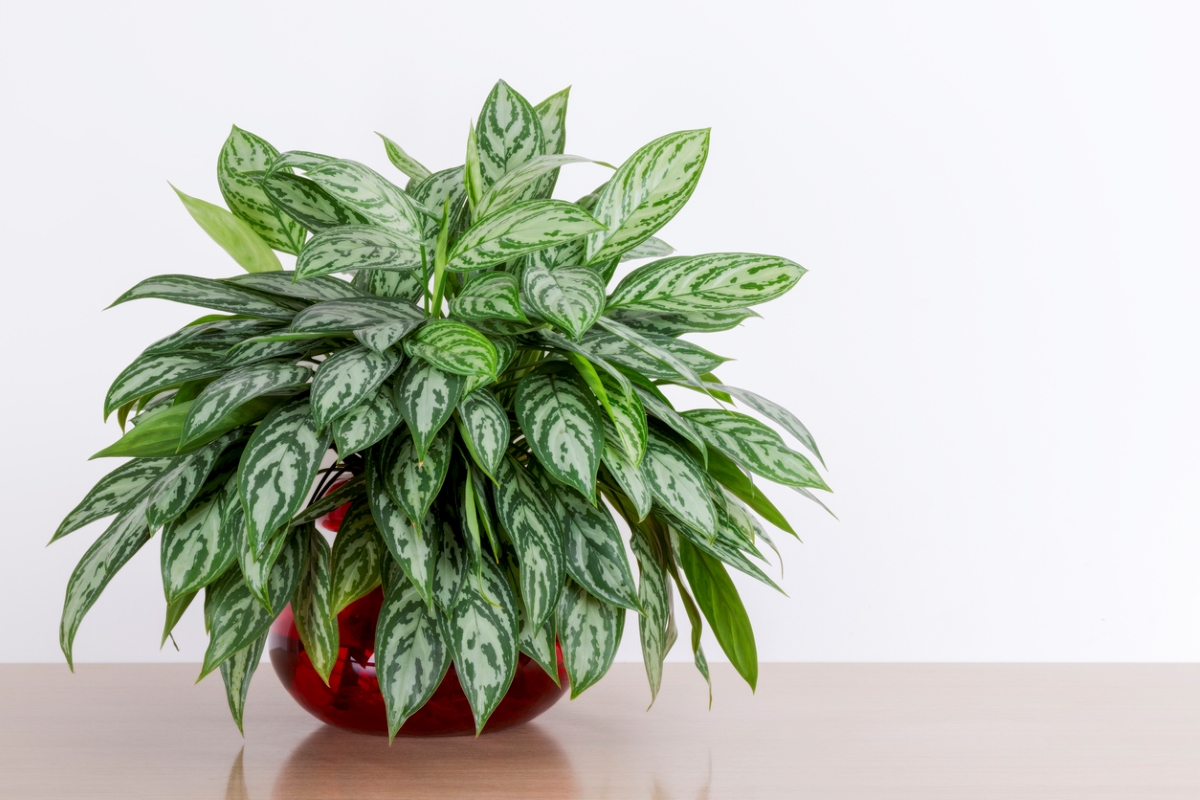
Suitable for low-light conditions—and for those without a green thumb—Chinese evergreen is a terrific addition to a novice plant grower’s bedroom. According to NASA’s Clean Air Study, it removes benzene and formaldehyde from the air, and because it grows slowly, it’s usually small enough to keep on your nightstand. According to the ASPCA, this plant is toxic to pets—best steer clear and choose different bedroom plants if your animals sleep with you.
RELATED: How to Test Air Quality in Your Home
16. Rubber Plant (Ficus elastica)
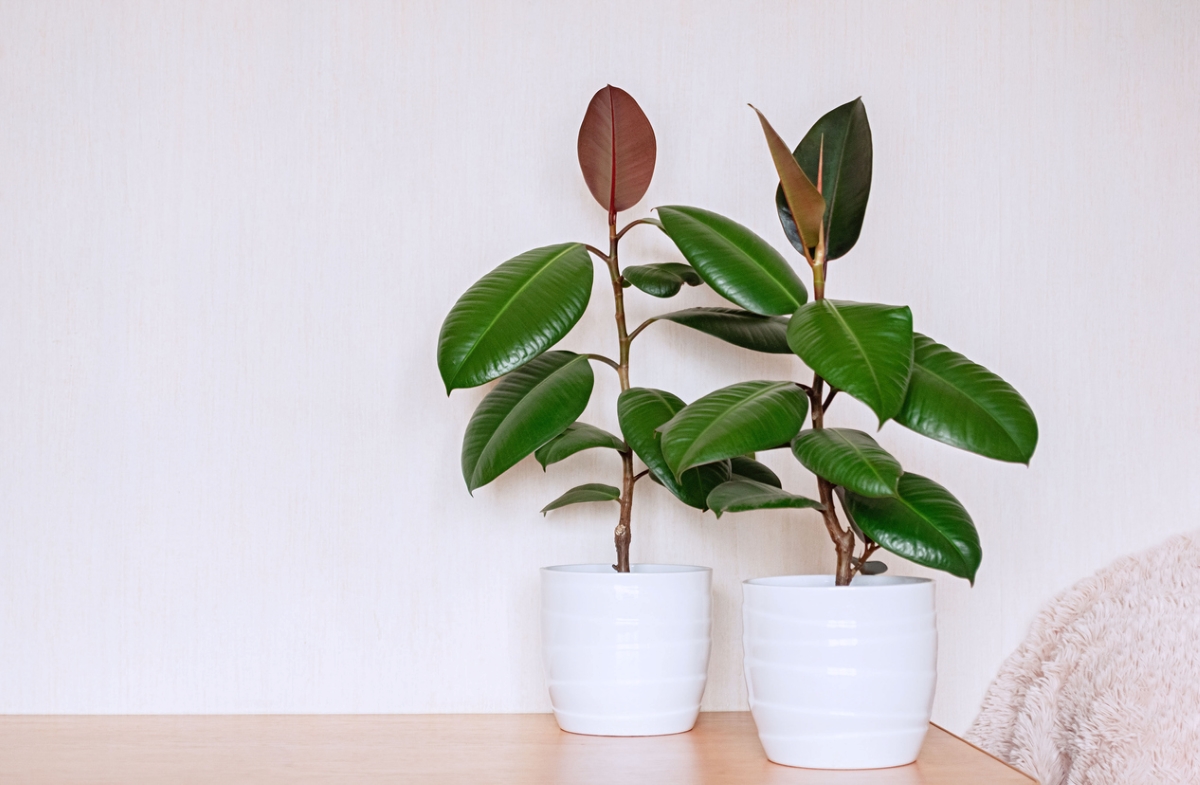
The rubber plant is an excellent choice for a bedroom. Its lush green foliage adds natural beauty and serenity to any room, creating a calm and soothing atmosphere that can aid in relaxation. Additionally, the rubber plant is known to be an excellent air purifier, removing harmful toxins from the indoor environment. Like many other houseplants, rubber plants release oxygen during the nighttime, which can enhance oxygen levels in the room and create a more restful atmosphere.
17. Boston Fern (Nephrolepis exaltata)
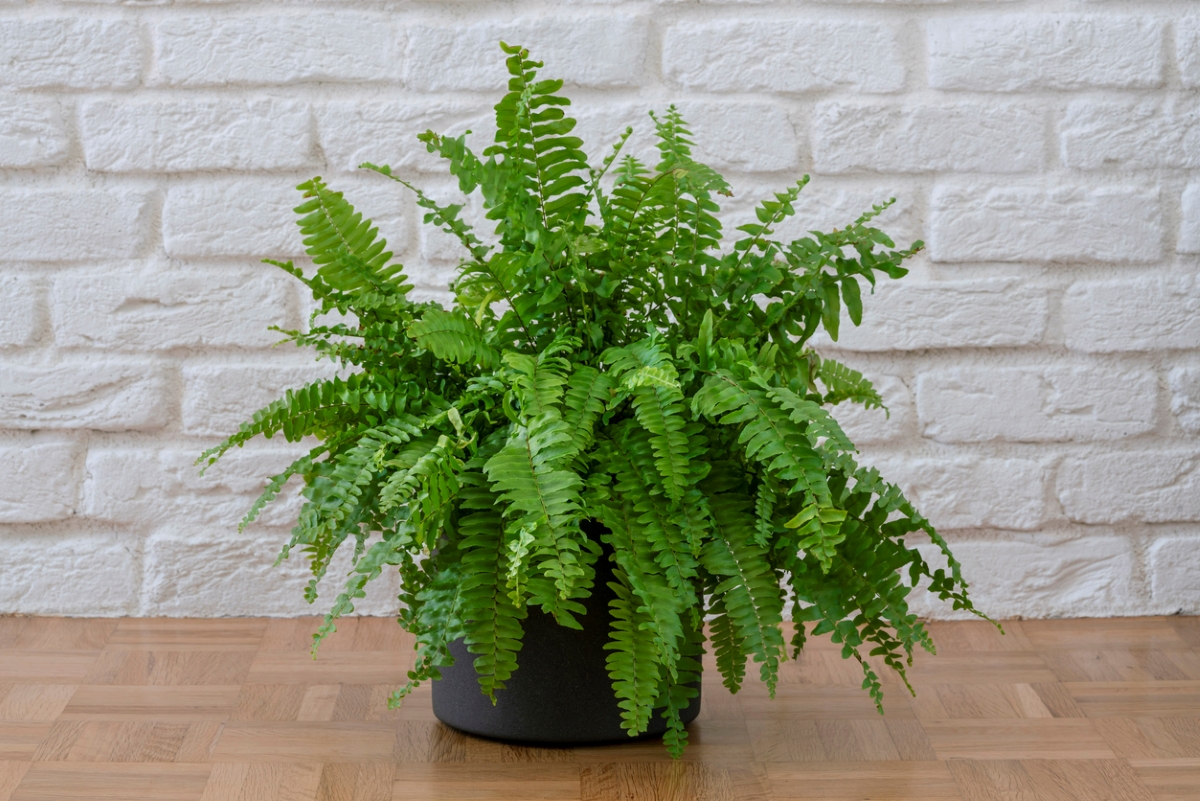
Since Boston ferns thrive in higher humidity environments, they need to be kept moist, which can be a challenge in a bedroom. But if you give it enough humidity and light, a Boston fern will reward you with air-purifying properties and an exuberant mass of frilly leaves. Boston ferns have also been shown to absorb and soften ambient sounds in the bedroom, which can be useful if you live in a noisy neighborhood or have disruptive sounds in your surroundings.
18. ZZ Plant (Zamioculcas zamiifolia)
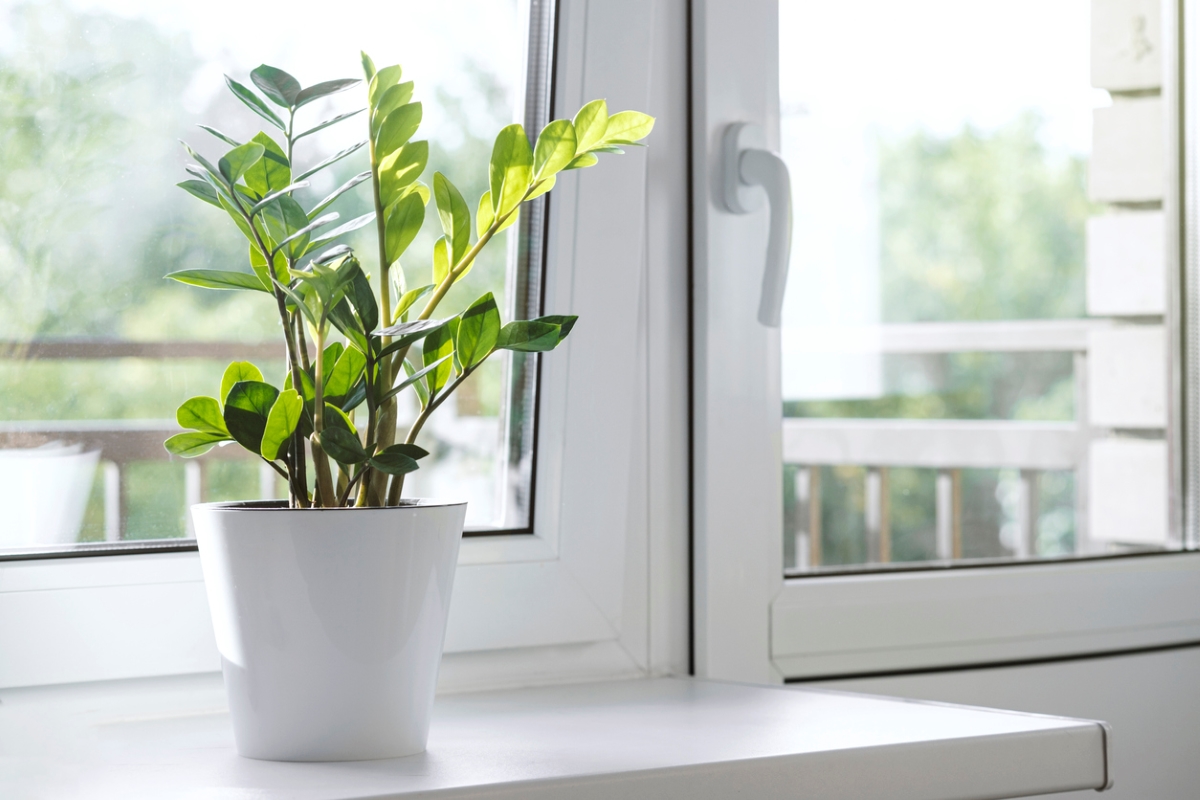
The low-maintenance ZZ plant offers numerous benefits for your bedroom. For one, it tolerates low-light environments, which makes it perfect for bedrooms that receive limited sunlight. Also, like several plants on this list, ZZ plants do fine with inconsistent watering, so even if you’re a little forgetful, the plant will persevere, releasing oxygen into the room and freshening up the space despite occasional neglect.

